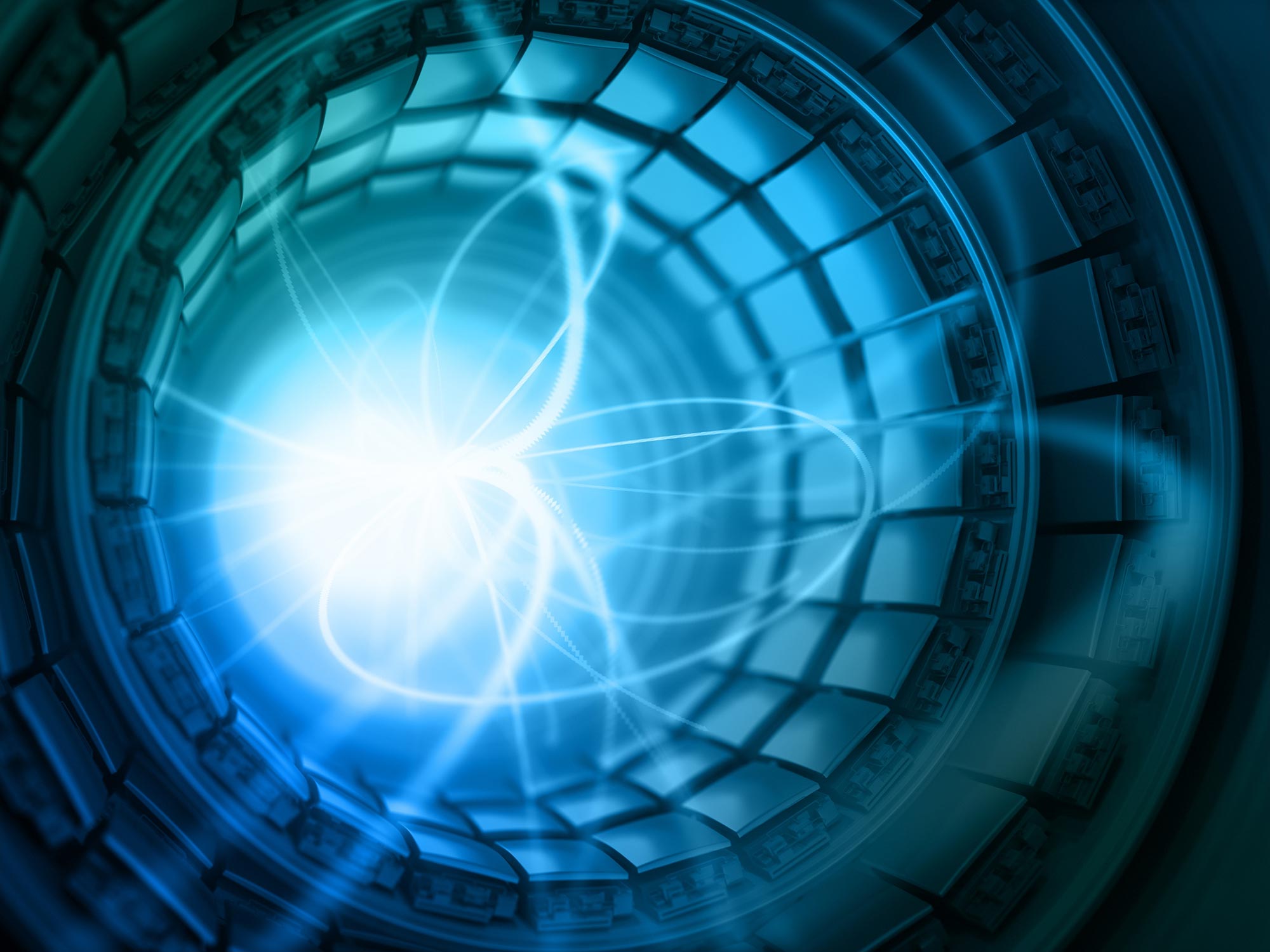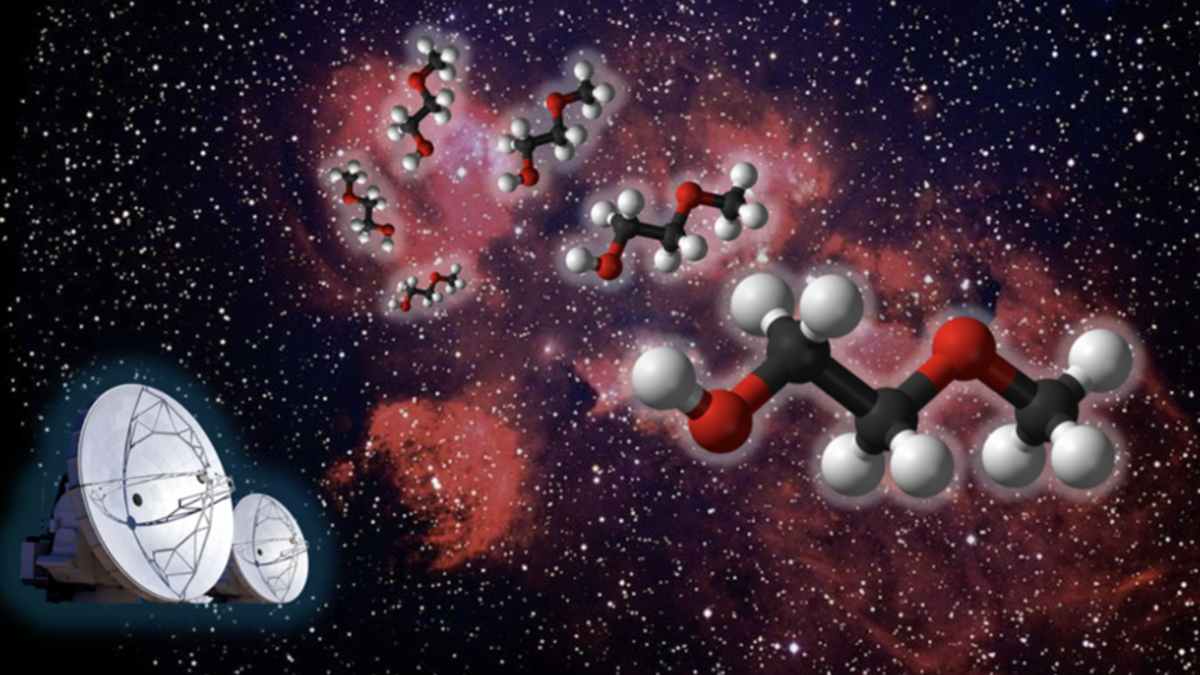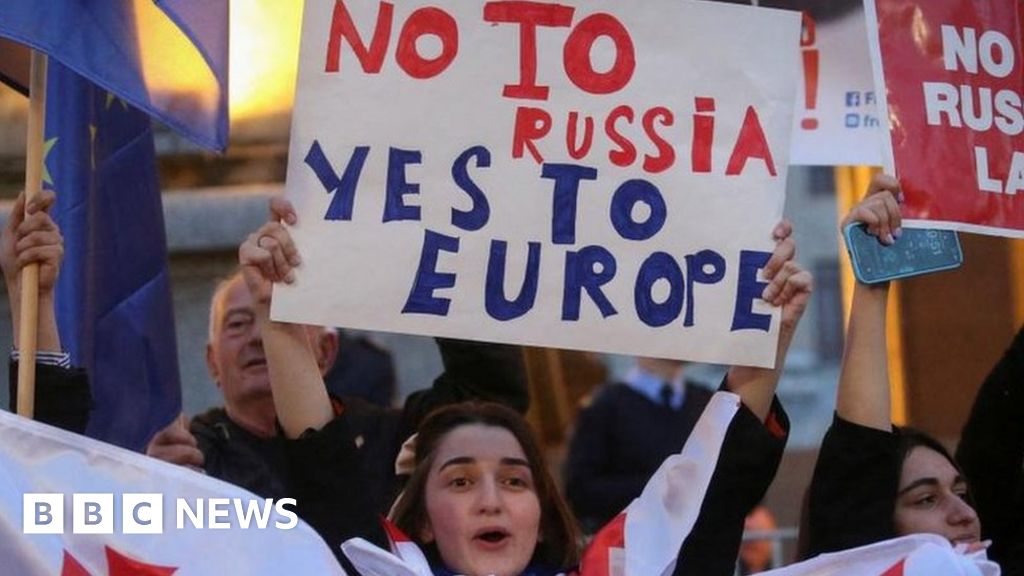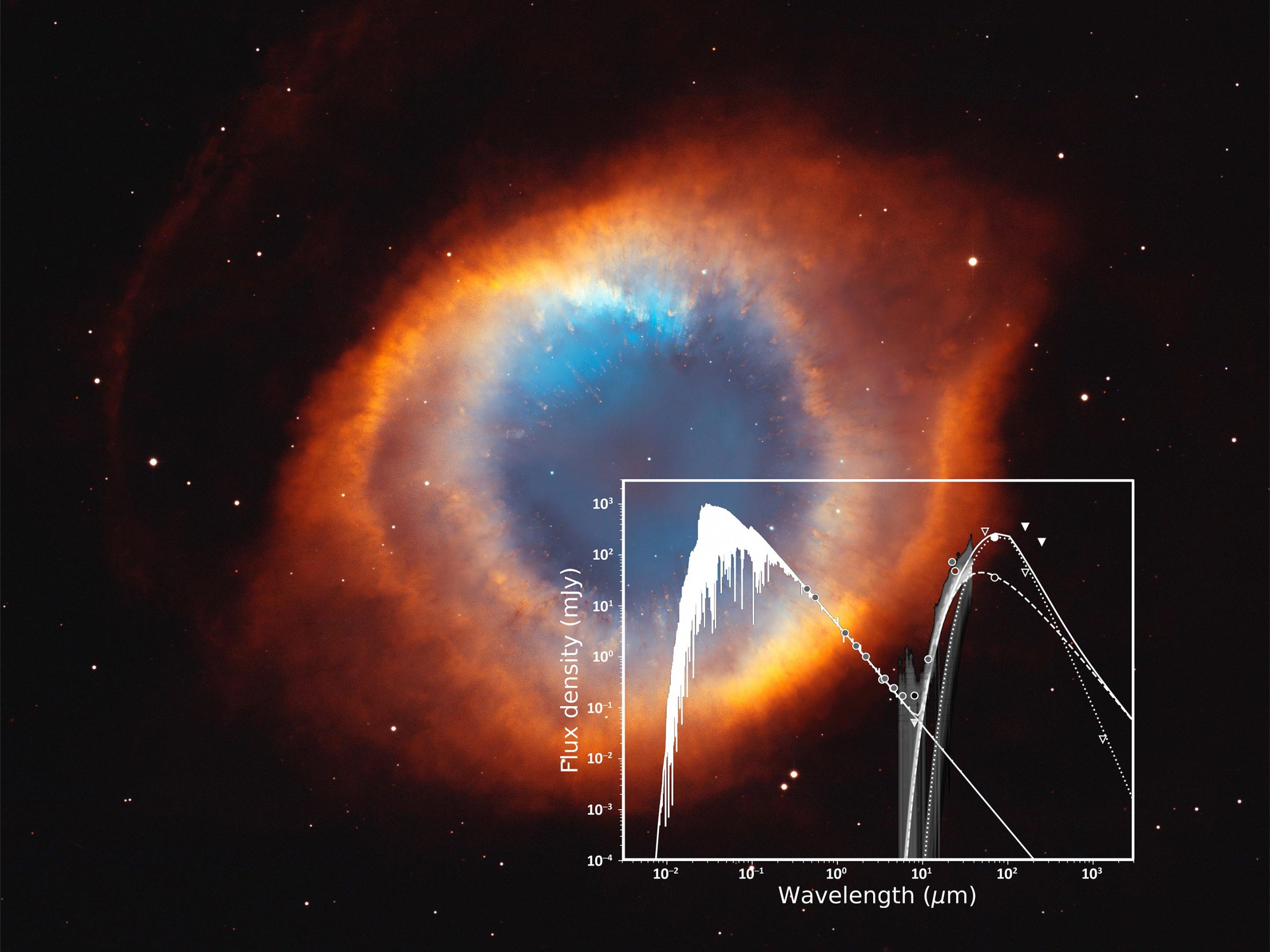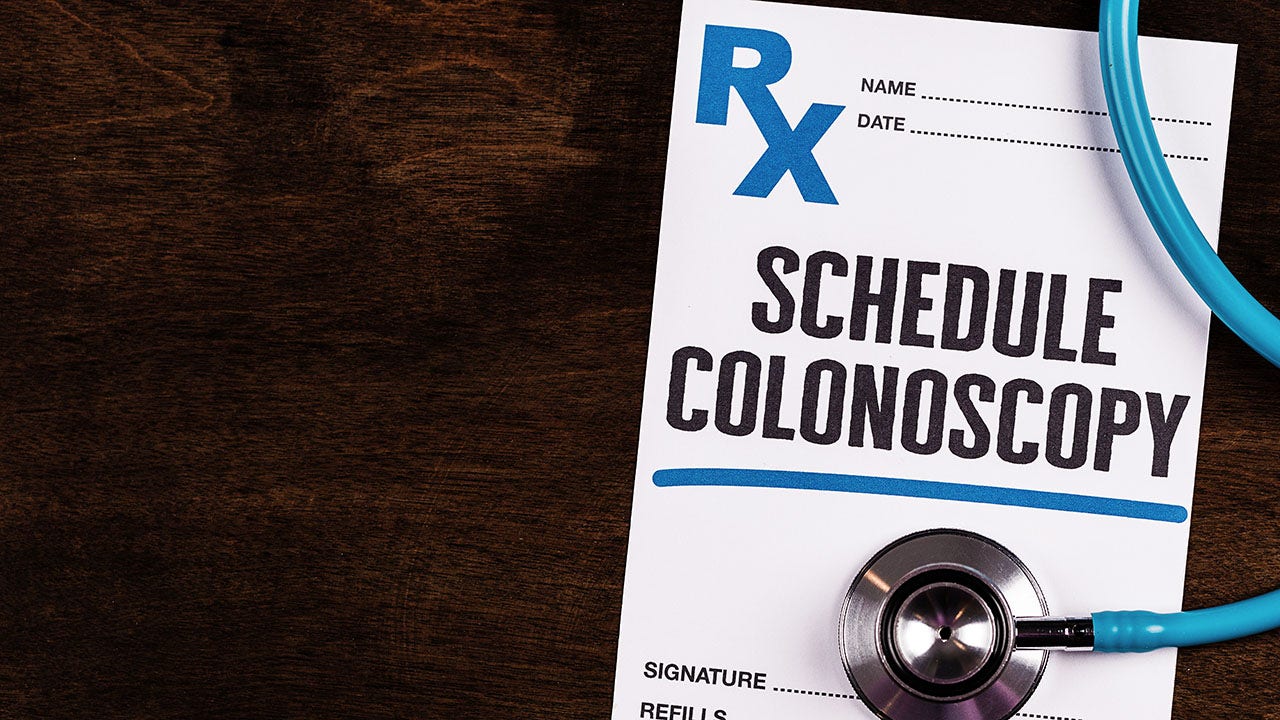يُظهر القياس الأكثر دقة لكتلة البوزون W التوتر مع العينة القياسية.
بعد 10 سنوات من التحليل والتحليل الدقيقين ، أعلن العلماء في CDF بالتعاون مع مختبر Fermi National Accelerator Laboratory التابع لوزارة الطاقة الأمريكية في 7 أبريل 2022 أن القياس الأكثر دقة لكتلة W boson قد تم تحقيقه. الجسيمات التي تحمل قوة الطبيعة. باستخدام البيانات التي تم جمعها بواسطة كاشف المصادم في Fermilap أو CDF ، حدد العلماء الآن كتلة الجسيم بدقة 0.01 ٪ – ضعف دقة أفضل قياس سابق. وهذا يعادل قياس وزن غوريلا وزنها 800 رطل حتى 1.5 أوقية.
قياس الدقة الجديد المنشور في المجلة علم، يسمح للعلماء باختبار النموذج القياسي لفيزياء الجسيمات ، والبنية النظرية التي تصف الطبيعة في مستواها الأساسي. الخلاصة: تُظهر قيمة الكتلة الجديدة التوتر مع القيمة التي يتلقاها العلماء باستخدام المدخلات التجريبية والنظرية في سياق النموذج القياسي.
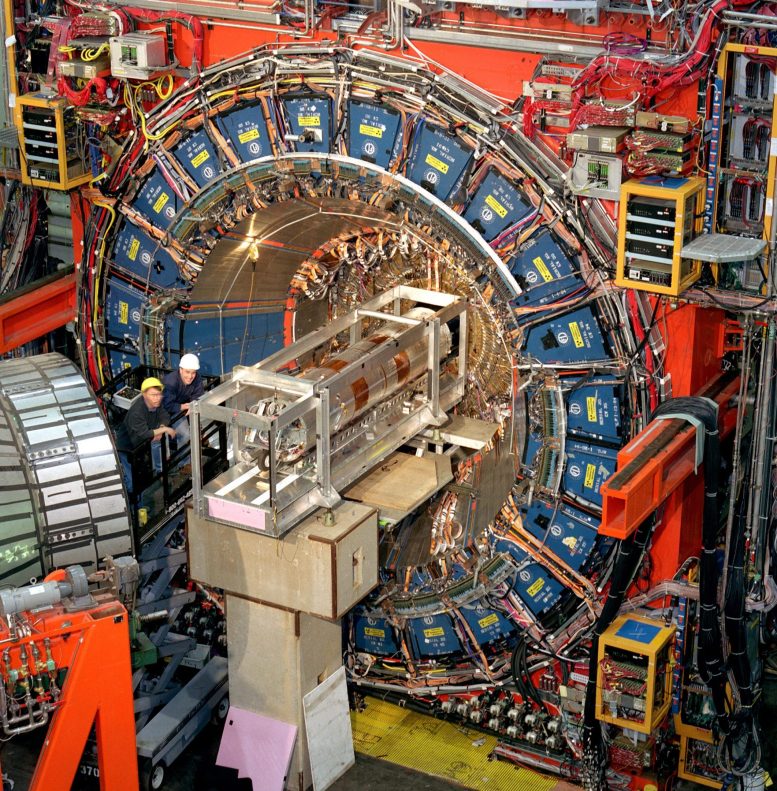
سجل كاشف المصادم الموجود على Fermilap تصادم الجسيمات عالية الطاقة الناتجة عن حلقة Devatron من عام 1985 إلى عام 2011. لا يزال حوالي 400 عالم من 54 شركة في 23 دولة يعملون على ثروة البيانات التي تم جمعها من خلال التجربة. الائتمان: فيرميلاب
قال أشوتوش ف. من جامعة ديوك: “إن عدد التحسينات والتجارب الإضافية التي أجريت على نتائجنا هائل”. قال Godwall إنه قاد التحليل وكان واحدًا من 400 عالم في تعاون CDF. “لقد أخذنا في الاعتبار الفهم المتقدم لاكتشاف الجسيمات لدينا والتحسينات في الفهم النظري والتجريبي لتفاعلات بوزون W مع الجسيمات الأخرى.
إذا تم تأكيده ، يشير هذا القياس إلى وجود حاجة محتملة لإجراء تحسينات في حساب النموذج القياسي أو ملحقات النموذج.
حدد العلماء الآن كتلة البوزون W بدقة 0.01٪. إنه دقيق مرتين مثل أفضل قياس سابق ويظهر توترًا مع النموذج القياسي.
تتوافق القيمة الجديدة مع العديد من قياسات كتلة البوزون W السابقة ، ولكن هناك بعض الاختلافات في الرأي. ستكون هناك حاجة إلى قياسات مستقبلية لإلقاء مزيد من الضوء على النتيجة.
قال جو ليكن ، نائب مدير Fermilab: “في حين أن هذا استنتاج مثير للاهتمام ، يجب تأكيد القياس من خلال تجربة أخرى قبل أن يتم شرحه بالكامل”.
W boson هو الجسيم الرسول للطاقة النووية الضعيفة. إنها مسؤولة عن العمليات النووية التي تتسبب في توهج الشمس وتحللها إلى جزيئات. باستخدام تصادمات الجسيمات عالية الطاقة الناتجة عن تصادمات Deutron في Fermilap ، جمع تعاون CDF كميات كبيرة من البيانات التي تحتوي على بوزونات W من 1985 إلى 2011.
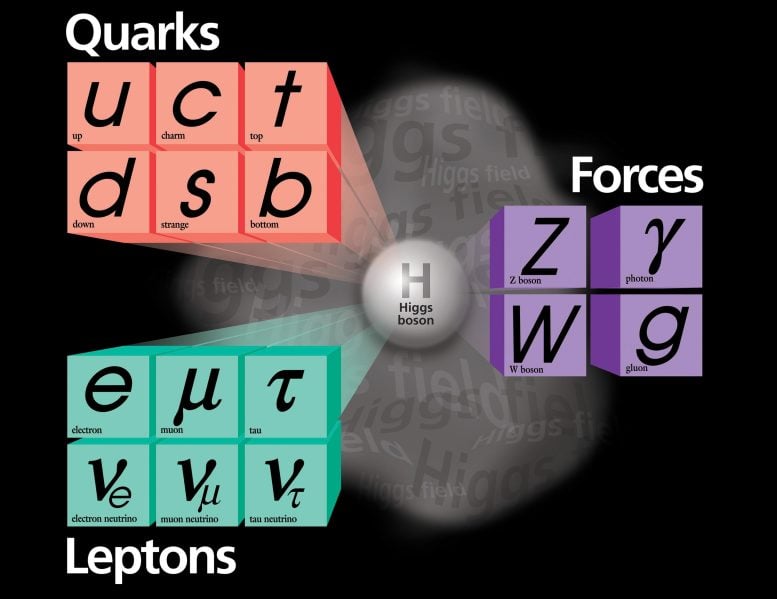
W boson هو الجسيم الرسول للطاقة النووية الضعيفة. إنها مسؤولة عن العمليات النووية التي تتسبب في توهج الشمس وتحللها إلى جزيئات. يدرس علماء CDF خصائص بوزون W باستخدام البيانات التي تم جمعها أثناء تصادم Deutron في Fermilap. الائتمان: مختبر Fermi National Accelerator Laboratory
فيزيائي CDF كريس هايز[{” attribute=””>University of Oxford said, “The CDF measurement was performed over the course of many years, with the measured value hidden from the analyzers until the procedures were fully scrutinized. When we uncovered the value, it was a surprise.”
The mass of a W boson is about 80 times the mass of a proton, or approximately 80,000 MeV/c2. CDF researchers have worked on achieving increasingly more precise measurements of the W boson mass for more than 20 years. The central value and uncertainty of their latest mass measurement is 80,433 +/- 9 MeV/c2. This result uses the entire dataset collected from the Tevatron collider at Fermilab. It is based on the observation of 4.2 million W boson candidates, about four times the number used in the analysis the collaboration published in 2012.
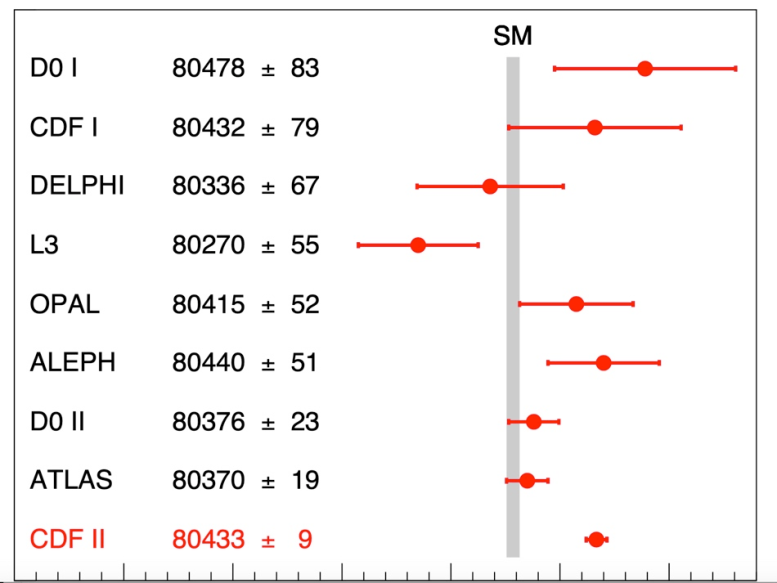
The mass of a W boson is about 80 times the mass of a proton, or approximately 80,000 MeV/c2. Scientists of the Collider Detector at Fermilab collaboration have achieved the world’s most precise measurement. The CDF value has a precision of 0.01 percent and is in agreement with many W boson mass measurements. It shows tension with the value expected based on the Standard Model of particle physics. The horizontal bars indicate the uncertainty of the measurements achieved by various experiments. The LHCb result was published after this paper was submitted and is 80354+- 32 MeV/c2. Credit: CDF collaboration
“Many collider experiments have produced measurements of the W boson mass over the last 40 years,” said CDF co-spokesperson Giorgio Chiarelli, Italian National Institute for Nuclear Physics (INFN-Pisa). “These are challenging, complicated measurements, and they have achieved ever more precision. It took us many years to go through all the details and the needed checks. It is our most robust measurement to date, and the discrepancy between the measured and expected values persists.”
The collaboration also compared their result to the best value expected for the W boson mass using the Standard Model, which is 80,357 ± 6 MeV/c2. This value is based on complex Standard Model calculations that intricately link the mass of the W boson to the measurements of the masses of two other particles: the top quark, discovered at the Tevatron collider at Fermilab in 1995, and the Higgs boson, discovered at the Large Hadron Collider at CERN in 2012.
CDF co-spokesperson David Toback, Texas A&M University, stated the result is an important contribution to testing the accuracy of the Standard Model. “It’s now up to the theoretical physics community and other experiments to follow up on this and shed light on this mystery,” he added. “If the difference between the experimental and expected value is due to some kind of new particle or subatomic interaction, which is one of the possibilities, there’s a good chance it’s something that could be discovered in future experiments.”
Reference: “High-precision measurement of the W boson mass with the CDF II detector” by CDF Collaboration, T. Aaltonen, S. Amerio, D. Amidei, A. Anastassov, A. Annovi, J. Antos, G. Apollinari, J. A. Appel, T. Arisawa, A. Artikov, J. Asaadi, W. Ashmanskas, B. Auerbach, A. Aurisano, F. Azfar, W. Badgett, T. Bae, A. Barbaro-Galtieri, V. E. Barnes, B. A. Barnett, P. Barria, P. Bartos, M. Bauce, F. Bedeschi, S. Behari, G. Bellettini, J. Bellinger, D. Benjamin, A. Beretvas, A. Bhatti, K. R. Bland, B. Blumenfeld, A. Bocci, A. Bodek, D. Bortoletto, J. Boudreau, A. Boveia, L. Brigliadori, C. Bromberg, E. Brucken, J. Budagov, H. S. Budd, K. Burkett, G. Busetto, P. Bussey, P. Butti, A. Buzatu, A. Calamba, S. Camarda, M. Campanelli, B. Carls, D. Carlsmith, R. Carosi, S. Carrillo, B. Casal, M. Casarsa, A. Castro, P. Catastini, D. Cauz, V. Cavaliere, A. Cerri, L. Cerrito, Y. C. Chen, M. Chertok, G. Chiarelli, G. Chlachidze, K. Cho, D. Chokheli, A. Clark, C. Clarke, M. E. Convery, J. Conway, M. Corbo, M. Cordelli, C. A. Cox, D. J. Cox, M. Cremonesi, D. Cruz, J. Cuevas, R. Culbertson, N. d’Ascenzo, M. Datta, P. de Barbaro, L. Demortier, M. Deninno, M. D’Errico, F. Devoto, A. Di Canto, B. Di Ruzza, J. R. Dittmann, S. Donati, M. D’Onofrio, M. Dorigo, A. Driutti, K. Ebina, R. Edgar, A. Elagin, R. Erbacher, S. Errede, B. Esham, S. Farrington, J. P. Fernández Ramos, R. Field, G. Flanagan, R. Forrest, M. Franklin, J. C. Freeman, H. Frisch, Y. Funakoshi, C. Galloni, A. F. Garfinkel, P. Garosi, H. Gerberich, E. Gerchtein, S. Giagu, V. Giakoumopoulou, K. Gibson, C. M. Ginsburg, N. Giokaris, P. Giromini, V. Glagolev, D. Glenzinski, M. Gold, D. Goldin, A. Golossanov, G. Gomez, G. Gomez-Ceballos, M. Goncharov, O. González López, I. Gorelov, A. T. Goshaw, K. Goulianos, E. Gramellini, C. Grosso-Pilcher, J. Guimaraes da Costa, S. R. Hahn, J. Y. Han, F. Happacher, K. Hara, M. Hare, R. F. Harr, T. Harrington-Taber, K. Hatakeyama, C. Hays, J. Heinrich, M. Herndon, A. Hocker, Z. Hong, W. Hopkins, S. Hou, R. E. Hughes, U. Husemann, M. Hussein, J. Huston, G. Introzzi, M. Iori, A. Ivanov, E. James, D. Jang, B. Jayatilaka, E. J. Jeon, S. Jindariani, M. Jones … P. Wagner, R. Wallny, S. M. Wang, D. Waters, W. C. Wester, D. Whiteson, A. B. Wicklund, S. Wilbur, H. H. Williams, J. S. Wilson, P. Wilson, B. L. Winer, P. Wittich, S. Wolbers, H. Wolfmeister, T. Wright, X. Wu, Z. Wu, K. Yamamoto, D. Yamato, T. Yang, U. K. Yang, Y. C. Yang, W.-M. Yao, G. P. Yeh, K. Yi, J. Yoh, K. Yorita, T. Yoshida, G. B. Yu, I. Yu, A. M. Zanetti, Y. Zeng, C. Zhou and S. Zucchelli, 7 April 2022, Science.
DOI: 10.1126/science.abk1781
The CDF collaboration comprises 400 scientists at 54 institutions in 23 countries.

